Hello to all….
The following is the Eastern Massachusetts ARES SET Drill participants information. This has been posted as an announcement and as a document to the Main Menu of the web site and will be gradually circulated across the email lists. Net Controls and leadership will also receive a document that guides folks through the scenario.
There will be a strong potential for failovers from infrastructure such as repeaters, EchoLink and IRLP nodes to Simplex and HF for this exercise. Amateurs participating in the exercise should prepare for those contingencies. This documentation may be updated again over the next couple of weeks.
Below is the participants information:
Date and Timeframe of Exercise
Saturday November 4th, 2006
Start Time 10 AM
End Time: 1230 PM
Duration: 2.5 Hours
-Please allow time for setup/take down of any equipment during this exercise.
Scenario Background
Seismic activity in New England had increased noticeably in the Fall of 2006. Several small earthquakes occurred in the Bangor, Maine area and one of the earthquakes, which measured 3.9 on the Richter scale was felt through much of Southern Maine and New Hampshire and caused power outages and a rockslide closed a road in Arcadia National Park. The increase in seismic activity caused concerns for possible additional and larger seismic activity on other faults along the New England coast that have been inactive for several decades.
A 6.5 on the Richter Scale Earthquake impacts the Cape Ann Massachusetts fault. This quake causes major damage across Northeast Massachusetts and the Greater Boston area with moderate to major damage across Southeast and Central Massachusetts with moderate damage across Western Massachusetts and Cape Cod and the Islands. Concerns for a moderate tsunami are raised for parts of East Coastal Massachusetts. Aftershocks in the 4.5 to 5.5 on the Richter scale range are also possible for the next 24-48 hours. The earthquake causes Eastern Massachusetts ARES to fully activate and to await direction on deployment orders from NGO’s and for backup support to RACES groups where required.
Failovers of infrastructure are likely given the severity of the event and all participants should be prepared for those contingencies ahead of time, much like what would be expected during a major real incident.
Purpose
Eastern Massachusetts ARES will participate in the Cape Ann Earthquake Simulated Emergency Test. The purpose of this drill will be the following:
• Local ARES team coordination and deployment as well as local NTS and tactical message handling.
• Intra district and interdistrict tactical and formal message handling.
• Utilization of HF, VHF, UHF, Packet, WinLink IRLP and Echolink modes of communication with failovers to other communication systems.
• Utilization of EOC or Simulated EOC’s at various points across the section and interfacing with other EOC’s, Simulated EOC’s and SKYWARN liaisons in other sections where appropriate.
• ARES teams are expected to provide damage assessment from the earthquake similar to what would be done for a weather related incident.
• Utilization of the integrated conference server, which is the Echolink *NEW-ENG* conference node and IRLP Reflector 9123 as a command net for ARES/RACES/SKYWARN/MARS operations.
For this exercise, it is expected that all EC’s, SKYWARN Liaisons or their designee to support this drill and what is to be exercised. As always, at the local level, message handling and formation is critical and keeping Hams at the local level busy must occur. Be creative and at the same time be realistic. The drill scenario will follow NTS guided messages that have been used in past drills.
Amateurs are asked to then build tactical messages as well as NTS traffic messages for the exercise. For this drill, the Eastern Massachusetts ARES SEC will be located either at the Acushnet Emergency Management Agency or at the SEMARA, Southeast Massachusetts Amateur Radio Association Radio Club or be mobile between those 2 locations. A command net will be run via VoIP and HF.
Given that an earthquake of this magnitude will cause significant damage, we are expecting Amateur Radio Operators to be creative and give realistic and reasonable damage reports that a major earthquake would cause across the area. If you’re having trouble coming up with this information, one way to generate data can be to have each color house in your neighborhood be associated with a certain amount of damage. This type of ideology is done in Damage Assessment exercises. Here is an example that should be utilized as required:
White Houses: Totally destroyed
Blue Houses: Side walls caved in and home structurally unsafe
Red houses: Home damage to siding, awnings with windows smashed
Brown houses: No damage
The same could be done for tree damage:
Trees near white houses: Trees knocked down, landslide in the area
Trees near blue houses: Large trees knocked down only a few untouched.
Trees near red houses: Several trees down but larger tress undamaged.
Trees near Brown houses: 1-3 large trees down in the area.
With these damage examples, you can also create reports of trees down on to houses causing damage, water and/or gas mains that have broken underground. If you have different color houses then the examples used above, you can set up the color coding of homes for damage anyway you see fit to generate reports of damage for your area.
Exercise Objectives
The objectives of this exercise are as follows:
• Have all teams have one liaison that monitors their local RACES Repeater in addition to their local operations.
• ARES teams willing to deploy away teams are asked to do so where possible provided benign weather conditions on the drill date.
• Establish district wide communication utilizing the following modes:
o IRLP and/or Echolink nodes.
o Utilizing the integrated Echolink *NEW-ENG* Conference Node (Node #9123) and IRLP reflector 9123 as a command net.
o HF
o Utilizing Various 2 Meter Repeaters that the ARES teams will be utilizing in the area when necessary.
o Utilize failovers to simplex using the output frequency of your repeater with HF utilized for long-haul communications.
o Utilizing SKYWARN frequencies to give mock tactical reports that meet SKYWARN criteria.
o Monitoring RACES Nets active during the exercise and communicate with RACES stations when/if needed.
o Establish a digital means of contact via Packet or WinLink between areas for those that have WinLink and/or Packet capability.
• Establish contact with other ARES districts and EOC’s via HF (3943 and/or 7245 KHz).
• Test and evaluate the range of Home stations for relay operations.
• Having mobile “roving” Amateurs wherever possible.
• Practice sending many test NTS messages for requests for assistance and status reports to ARES leadership and for RACES stations to send requests for assistance and status reports to their Region I, II or III Managers.
• Practice sending many test tactical messages to ARES/RACES leadership.
• Practice sending out of bulletins and statements from the United States Geological Survey to the various ARES teams.
• Practice sending traffic between ARES members within an ARES team.
• Practice sending traffic between EOC’s within an ARRL Setion.
• Practice sending traffic to the Western Massachusetts section ARES/RACES/SKYWARN personnel where appropriate.
• Assure MARS Liaisons have a way to gather ARES reports to formulate into EEI’s (Essential Elements of Information).
Operational Ground Rules
The following are some operational ground rules for this exercise:
• All communications options should be utilized. DEC’s and EC’s may throw in “failures” to test out “failover” of communications wherever possible as long as they are properly communicated up and down the ARES leadership.
• Many messages of both a tactical and NTS formal nature should be sent within the teams participating, between teams and between districts wherever possible.
• Frequent usage of the phrase “This is a Drill” should be incorporated with any messages, traffic or announcements relating to the drill.
Operational Players
The following is a list of agencies and a general list of EOC’s that will be playing in the exercise.
Acushnet Emergency Management Agency (WA1EMA)
The Acushnet Emergency Management Agency building will be utilized for this exercise to coordinate activities within Acushnet and the surrounding Southeastern Massachusetts area.
SEMARA: Southeast Massachusetts Amateur Radio Association (W1AEC)
We will attempt to get the Southeastern Massachusetts Amateur Radio Association Club House active for this drill. Once the details have been worked out, further information will be posted in this exercise documentation.
Home Stations
We encourage home stations across the Eastern Massachusetts section to monitor and check into nets across Eastern Massachusetts district for ARES and SKYWARN assistance. Some home stations can act as “simulated EOC’s” or net controls where appropriate. We encourage stations to generate tactical message traffic for SKYWARN and formal message traffic for ARES where possible.
Mobile Stations
Mobile stations are encouraged to participate utilizing all modes at their disposal and can be utilized as roving stations and can report conditions that they might see if a real hurricane is occurring from their mobile station. We encourage stations to generate tactical message traffic for earthquake damage reports and formal message traffic for ARES where possible.
Amateur Radio Frequency Plan
The frequency plan will utilize existing SKYWARN and RACES repeaters that are well documented via the web. The following links detail these frequencies:
SKYWARN Frequencies:
http://users.rcn.com/freq.htm
RACES/Simplex Frequencies:
http://ares.ema.arrl.org/mod.php?mod=userpage&menu=1804&page_id=9
Please note that SKYWARN Frequencies are more up to date on the first link.
It is noted that IRLP and Echolink nodes maybe connected either to the *NEW-ENG* Conference node or IRLP Reflector 9123. This will again serve as a command net to facilitate contact with ARES-SKYWARN liaisons, MARS Liaisons, and city/town EOC’s who have the capability to liaison via this system. Individual Hams and Spotters are welcome to listen and if they have no other means to pass their information, they can pass it over this system but are otherwise asked to use their local SKYWARN, RACES and ARES repeaters to pass their traffic and allow the liaisons to pass the information to the command nets operating on VoIP and HF.
It is also noted that some SKYWARN, RACES and ARES frequencies overlap with one another. Past exercises have proven that there have been no issues with such overlap. This exercise will test that theory once again and will require net controls and ARES/RACES/SKYWARN management to manage their repeater and frequency resources:
The following additional frequencies will be utilized during the drill in the Southeast Massachusetts district:
SEMARA ARES Response Team Frequency:
147.000-Dartmouth Repeater
Fall River (BCRA) ARES/RACES Team Frequency:
145.15-Fall River Repeater PL: 123.0 Hz.
The MMRA Repeater System will be linked up for the two-hour period of the drill and we will attempt to have a Net Control monitoring the system full-time and facilitate traffic at a section level for Eastern Massachusetts. Below is the link for the frequencies that can be linked up utilizing the MMRA System:
http://www.mmra.org
The following are important regional frequencies via HF for this drill:
Regional ARES/RACES Net Primary for this drill:
3943 KHz LSB
Regional ARES/RACES Net Secondary for this drill:
7245 KHz LSB
The following are important Packet Frequencies on VHF/UHF and HF for this drill:
WinLink Frequencies:
145.75: Main WinLink Frequency for Mass. State EOC and MEMA Region 1
3.626 USB: Main HF WinLink Frequency for Mass. State EOC and MEMA Region 1.
Region 1 setup currently down due to interference issues.
Packet Frequencies:
145.01: Packet Frequency supporting MEMA Regions and State EOC
145.09: BBS infrastructure supporting MEMA and NWS main Packet Freq.
There are additional local frequencies that maybe utilized in this drill at your local town/city level or at a regional level. Please contact your ARES DEC or EC for further information on additional frequencies that maybe utilized in your specific area during the drill.
Respectfully Submitted,
Robert Macedo (KD1CY)
ARES SKYWARN Coordinator
Eastern Massachusetts ARES Section Emergency Coordinator
Pager #: (508) 354-3142
Home Phone #: (508) 994-1875 (After 6 PM)
Home/Data #: (508) 997-4503 (After 6 PM)
Work Phone #: 1-800-445-2588 Ext.: 72929 (8 AM-5 PM)
Email Address: rmacedo@rcn.com
http://users.rcn.com/rmacedo
1
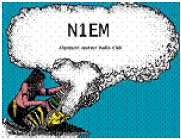 Members of the Algonquin Amateur Radio Club will again assist the Town of Marlborough by providing eyes and ears for a Halloween patrol/school watch. Interested parties are urged to contact Quin Spear, K1ZFH.
Members of the Algonquin Amateur Radio Club will again assist the Town of Marlborough by providing eyes and ears for a Halloween patrol/school watch. Interested parties are urged to contact Quin Spear, K1ZFH.

 The September, 2006 EMA traffic net and Public Service Honor Roll totals have been posted to
The September, 2006 EMA traffic net and Public Service Honor Roll totals have been posted to 
 “
“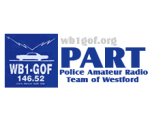 The logo (seen to the right) has represented the club since its very early days. And, while it had served well to identify the club and its members, some thought it might be time to refresh the club’s artwork.
The logo (seen to the right) has represented the club since its very early days. And, while it had served well to identify the club and its members, some thought it might be time to refresh the club’s artwork. 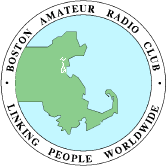 On Saturday, 2 December 2006, SKYWARN Recognition Day will be held for the eighth straight year. SKYWARN Recognition Day is an event where National Weather Service Forecast Offices get on the air and make contacts with other NWS Offices as well as all Amateurs and any Amateur Radio SKYWARN Spotters. The purpose is to thank the thousands of Amateur Radio SKYWARN Spotters whose timely severe weather reports into NWS Forecast Offices across the country protect life and property.
On Saturday, 2 December 2006, SKYWARN Recognition Day will be held for the eighth straight year. SKYWARN Recognition Day is an event where National Weather Service Forecast Offices get on the air and make contacts with other NWS Offices as well as all Amateurs and any Amateur Radio SKYWARN Spotters. The purpose is to thank the thousands of Amateur Radio SKYWARN Spotters whose timely severe weather reports into NWS Forecast Offices across the country protect life and property.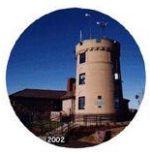 Fun – you want some fun? How’s about an antenna held 200 feet aloft by a kite in 2004? Then there was the gale-force snowstorm in 2003. [See
Fun – you want some fun? How’s about an antenna held 200 feet aloft by a kite in 2004? Then there was the gale-force snowstorm in 2003. [See 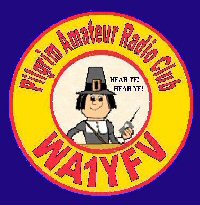 Members of the
Members of the 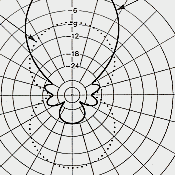 The IEEE Providence Section is sponsoring a talk on Distributed Load Monopole (DLM) Antenna Technology by Robert Vincent, K1DFT.
The IEEE Providence Section is sponsoring a talk on Distributed Load Monopole (DLM) Antenna Technology by Robert Vincent, K1DFT.  Whitey Doherty, K1VV writes on discussion@semara.org:
Whitey Doherty, K1VV writes on discussion@semara.org: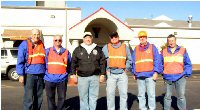
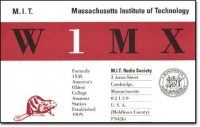

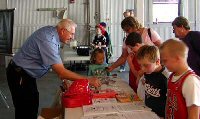
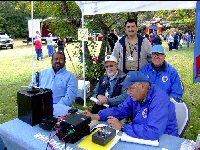
 As reported on today’s ARRL Web (
As reported on today’s ARRL Web (
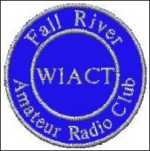 Ron Silvia, WB1HGA writes on bcra-club@yahoogroups.com:
Ron Silvia, WB1HGA writes on bcra-club@yahoogroups.com: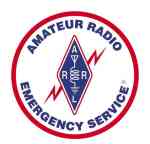 Holy cow! A 6.5 scale earthquake impacts the Cape Ann Massachusetts fault, causing major damage across Northeast Massachusetts and the Greater Boston area. A moderate tsunami is feared for parts of East Coastal Massachusetts. Aftershocks in the 4.5 to 5.5 are possible over the next 24-48 hours.
Holy cow! A 6.5 scale earthquake impacts the Cape Ann Massachusetts fault, causing major damage across Northeast Massachusetts and the Greater Boston area. A moderate tsunami is feared for parts of East Coastal Massachusetts. Aftershocks in the 4.5 to 5.5 are possible over the next 24-48 hours.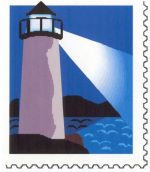 The board and membership of the
The board and membership of the 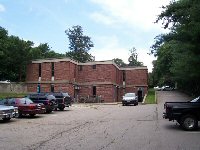
 ARRL and Citizen Corp are teaming up to assist local school districts (if they need the help) to set up and register their NOAA Weather All Hazard Public Alert Radio.
ARRL and Citizen Corp are teaming up to assist local school districts (if they need the help) to set up and register their NOAA Weather All Hazard Public Alert Radio.